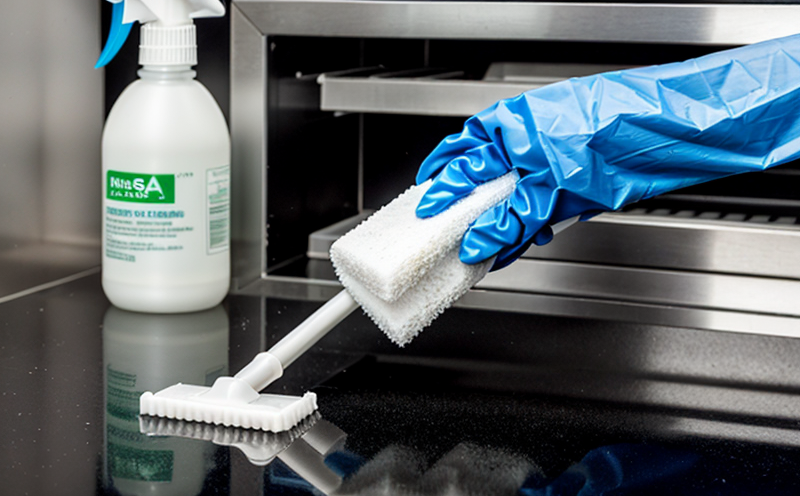DIN 58916 Sterilization Resistance Testing of Hygiene Plastics
The DIN 58916 standard is a pivotal regulation in Germany that ensures hygiene plastics maintain their integrity and functionality after being subjected to sterilization processes. This testing procedure is crucial for ensuring the safety and effectiveness of plastic products used in medical, food contact, and pharmaceutical industries. Compliance with this standard not only guarantees product quality but also enhances consumer confidence.
The test involves exposing a specimen made from hygiene plastics to various sterilization methods such as autoclaving, ethylene oxide (ETO), or gamma radiation. After the sterilization process, the plastic's mechanical properties, chemical stability, and other relevant parameters are assessed against specified acceptance criteria outlined in DIN 58916.
Given the diverse applications of hygiene plastics, this testing method is particularly important for ensuring that the materials used do not degrade or leach harmful substances during sterilization. This is critical for industries where contamination can lead to serious health risks. The standard also covers tests on the compatibility of adhesives and coatings applied to these plastics.
The process begins with selecting a representative sample from the batch of hygiene plastic products under test. Specimens are then prepared according to the specific requirements stipulated in DIN 58916, which includes cutting them into standardized sizes for consistent testing.
Once the specimens have been prepared, they undergo one or more sterilization methods depending on the intended use of the product. For instance, medical devices might require autoclaving under high-pressure steam conditions, while food contact plastics could be exposed to ETO gas. After sterilization, the samples are cooled down and inspected for any signs of damage.
Following sterilization, mechanical properties such as tensile strength, flexural modulus, and impact resistance are tested using appropriate instruments like universal testing machines or dynamometers. Additionally, chemical stability tests ensure that there is no significant change in the chemical composition of the plastic, which could indicate a risk of leaching harmful substances.
Color changes, discoloration, and other visual alterations are also evaluated to determine if they exceed acceptable limits set by DIN 58916. These evaluations help assess whether the sterilization process has adversely affected the aesthetic qualities of the plastic products.
The results from these tests provide critical insights into the performance and safety of hygiene plastics after sterilization, ensuring that they continue to meet regulatory requirements and industry standards. This testing method is vital for maintaining high-quality products in sectors where contamination could pose significant risks to public health.
Why It Matters
The importance of DIN 58916 sterilization resistance testing cannot be overstated, especially given the increasing demand for hygiene plastics in various critical applications. Ensuring that these materials can withstand rigorous sterilization processes without compromising their performance is essential to safeguarding public health and maintaining product integrity.
- Medical Devices: In healthcare settings, medical devices must remain functional after sterilization to ensure effective treatment of patients.
- Food Contact Plastics: Ensuring that food packaging materials do not degrade or leach harmful substances during sterilization is crucial for maintaining hygiene and safety standards.
- Pharmaceutical Packaging: Proper sterilization resistance testing guarantees the integrity of drug delivery systems, preventing contamination risks.
The results from DIN 58916 tests are vital in validating that hygiene plastics meet stringent quality control criteria. This ensures not only regulatory compliance but also enhances brand reputation and customer trust. By adhering to this standard, manufacturers can confidently bring their products to market, knowing they have passed rigorous testing.
Eurolab Advantages
At Eurolab, we pride ourselves on providing comprehensive DIN 58916 sterilization resistance testing services tailored specifically for hygiene plastics. Our state-of-the-art facilities and experienced technical staff ensure that every test is conducted with precision and accuracy.
- Expertise: Our team of experts has extensive knowledge in polymer science, ensuring the highest level of testing reliability.
- Modern Equipment: We employ cutting-edge equipment to conduct all required tests, including universal testing machines and spectrometers for chemical analysis.
- Rigorous Quality Control: Our processes are designed to meet or exceed international standards, providing consistent and accurate results.
- Dedicated Reporting: Clear and detailed reports are provided promptly after completion of the tests, helping clients make informed decisions.
We take pride in our ability to deliver reliable test results that not only comply with DIN 58916 but also exceed expectations. Our commitment to excellence ensures that our clients can trust us for all their testing needs.





